

The harbour of Candia was the “heart” of the city and the island of Crete, trading people and goods all over the Eastern Mediterranean. The Venetian ships were travelling loaded with Cretan products, such as cereals, dairies, wine, raisins and salt along with spices from the East, salted fish and wood from Constantinople and texture, furniture and iron tools from Europe.
Venetians between the 13th and 16th c., after developing the natural rocky formations to breakwaters, walled them and included the harbour into the city’s defense system. They constructed the Fortress at the entrance of the harbour, the ship-sheds, the cistern and the salt storage. In order to achieve the self-cleaning of the harbour from silting they let underwater channels in the northern breakwater. Despite their high level of engineering, they were obliged to perform continuous restorations, because of the earthquakes and the severe north winds that were damaging the structures and kept silting the basin.
In the 16th c. they built Koules (Turkish Su Kulesi) fortress, the Castello or Rocca a Mare (Fort of the Sea) in order to respond to the threat of the newly discovered gun powder and protect effectively the harbour and the city’s coastal walls.
During the same century they constructed the three complexes of ship-sheds where they were building, amending and storing the famous Venetian war galleys. “Arsenali Antichi” (Ancient Arsenals) complex was constructed first at the area where today the Prefecture of Crete building is situated. The complex was completed in 1507 AD, included five vaulted compartments and ruined finally in 1856 AD, due to a strong earthquake that destroyed completely Heraklion. Just west of that complex they erected “Arsenali Vecchi” (Old Arsenals) with four arched sections. The southern part of the complex still survives, although the northern part of it was demolished in the 1930s giving space for the coastal road way. The third complex, “Arsenali Nuovi” and “Nuovissimi” (New and Newer Arsenals) was raised in three stages at the eastern side of the harbour basin between 1556 and 1609 AD. They had a capacity of hosting ten ships. Out of the ten, only the central part of the southern two managed to survive to present day, due to earthquakes and the “modernization fever” of the 1930s.
Southeast of the Arsenali Nuovissimi a cistern (Cisterna) with a capacity of 20.000 barrels was finished in 1615 AD, built to provide fresh water to the harbour and the ships. Also, west of the complex was erected the Salt Storage, in order to serve the monopoly of the salt from Elounda and Souda salt pans.
 | 3. Crete and the sea | |
|---|---|---|
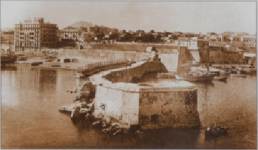 | 3.1 The harbour of Herakleion | |
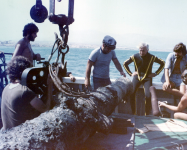 | 3.3 The underwater research of 1976 (Cousteau - MCE) | |
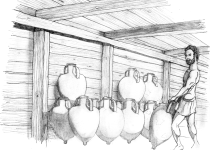 | 3.4 Roman shipwreck with Rhodian amphorae | |
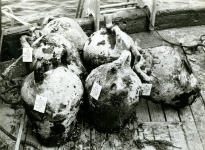 | 3.5 Byzantine amphorae shipwreck | |
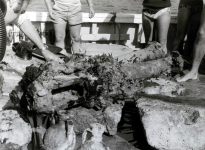 | 3.6 Venetian shipwreck with ballast of architectural elements | |
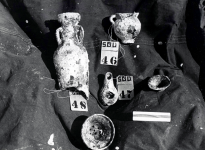 | 3.7 Underwater excavation at St. Georgios cove, Dhia (1976) |